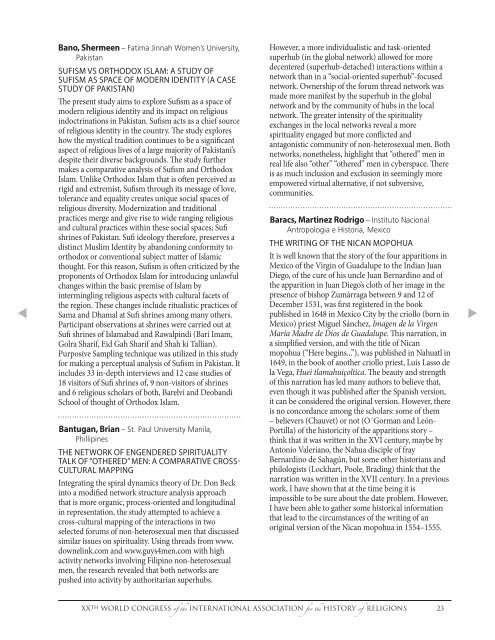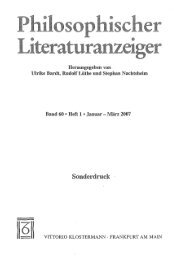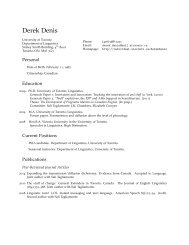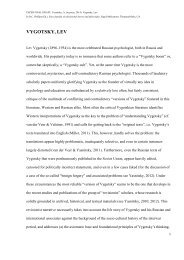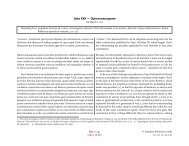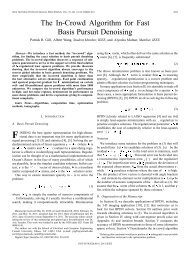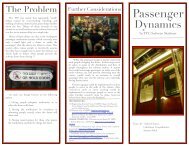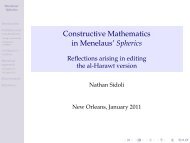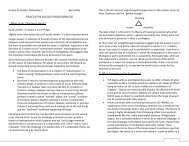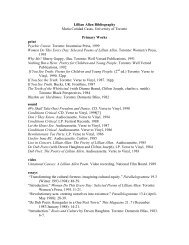BOOK of ABSTRACTS XXTh WORld COngReSS InTeRnATIOnAl ...
BOOK of ABSTRACTS XXTh WORld COngReSS InTeRnATIOnAl ...
BOOK of ABSTRACTS XXTh WORld COngReSS InTeRnATIOnAl ...
Create successful ePaper yourself
Turn your PDF publications into a flip-book with our unique Google optimized e-Paper software.
Bano, Shermeen – Fatima Jinnah Women’s University,<br />
Pakistan<br />
sufism vs ortHodox islam: a study <strong>of</strong><br />
sufism as sPace <strong>of</strong> modern identity (a case<br />
study <strong>of</strong> Pakistan)<br />
The present study aims to explore Sufism as a space <strong>of</strong><br />
modern religious identity and its impact on religious<br />
indoctrinations in Pakistan. Sufism acts as a chief source<br />
<strong>of</strong> religious identity in the country. The study explores<br />
how the mystical tradition continues to be a significant<br />
aspect <strong>of</strong> religious lives <strong>of</strong> a large majority <strong>of</strong> Pakistani’s<br />
despite their diverse backgrounds. The study further<br />
makes a comparative analysis <strong>of</strong> Sufism and Orthodox<br />
Islam. Unlike Orthodox Islam that is <strong>of</strong>ten perceived as<br />
rigid and extremist, Sufism through its message <strong>of</strong> love,<br />
tolerance and equality creates unique social spaces <strong>of</strong><br />
religious diversity. Modernization and traditional<br />
practices merge and give rise to wide ranging religious<br />
and cultural practices within these social spaces; Sufi<br />
shrines <strong>of</strong> Pakistan. Sufi ideology therefore, preserves a<br />
distinct Muslim Identity by abandoning conformity to<br />
orthodox or conventional subject matter <strong>of</strong> Islamic<br />
thought. For this reason, Sufism is <strong>of</strong>ten criticized by the<br />
proponents <strong>of</strong> Orthodox Islam for introducing unlawful<br />
changes within the basic premise <strong>of</strong> Islam by<br />
intermingling religious aspects with cultural facets <strong>of</strong><br />
the region. These changes include ritualistic practices <strong>of</strong><br />
Sama and Dhamal at Sufi shrines among many others.<br />
Participant observations at shrines were carried out at<br />
Sufi shrines <strong>of</strong> Islamabad and Rawalpindi (Bari Imam,<br />
Golra Sharif, Eid Gah Sharif and Shah ki Tallian).<br />
Purposive Sampling technique was utilized in this study<br />
for making a perceptual analysis <strong>of</strong> Sufism in Pakistan. It<br />
includes 33 in-depth interviews and 12 case studies <strong>of</strong><br />
18 visitors <strong>of</strong> Sufi shrines <strong>of</strong>, 9 non-visitors <strong>of</strong> shrines<br />
and 6 religious scholars <strong>of</strong> both, Barelvi and Deobandi<br />
School <strong>of</strong> thought <strong>of</strong> Orthodox Islam.<br />
Bantugan, Brian – St. Paul University Manila,<br />
Phillipines<br />
tHe netWork <strong>of</strong> engendered sPirituality<br />
talk <strong>of</strong> “otHered” men: a comParative crosscultural<br />
maPPing<br />
Integrating the spiral dynamics theory <strong>of</strong> Dr. Don Beck<br />
into a modified network structure analysis approach<br />
that is more organic, process-oriented and longitudinal<br />
in representation, the study attempted to achieve a<br />
cross-cultural mapping <strong>of</strong> the interactions in two<br />
selected forums <strong>of</strong> non-heterosexual men that discussed<br />
similar issues on spirituality. Using threads from www.<br />
downelink.com and www.guys4men.com with high<br />
activity networks involving Filipino non-heterosexual<br />
men, the research revealed that both networks are<br />
pushed into activity by authoritarian superhubs.<br />
However, a more individualistic and task-oriented<br />
superhub (in the global network) allowed for more<br />
decentered (superhub-detached) interactions within a<br />
network than in a “social-oriented superhub”-focused<br />
network. Ownership <strong>of</strong> the forum thread network was<br />
made more manifest by the superhub in the global<br />
network and by the community <strong>of</strong> hubs in the local<br />
network. The greater intensity <strong>of</strong> the spirituality<br />
exchanges in the local networks reveal a more<br />
spirituality engaged but more conflicted and<br />
antagonistic community <strong>of</strong> non-heterosexual men. Both<br />
networks, nonetheless, highlight that “othered” men in<br />
real life also “other” “othered” men in cyberspace. There<br />
is as much inclusion and exclusion in seemingly more<br />
empowered virtual alternative, if not subversive,<br />
communities.<br />
Baracs, Martinez Rodrigo – Instituto Nacional<br />
Antropologia e Historia, Mexico<br />
tHe Writing <strong>of</strong> tHe nican moPoHua<br />
It is well known that the story <strong>of</strong> the four apparitions in<br />
Mexico <strong>of</strong> the Virgin <strong>of</strong> Guadalupe to the Indian Juan<br />
Diego, <strong>of</strong> the cure <strong>of</strong> his uncle Juan Bernardino and <strong>of</strong><br />
the apparition in Juan Diego’s cloth <strong>of</strong> her image in the<br />
presence <strong>of</strong> bishop Zumárraga between 9 and 12 <strong>of</strong><br />
December 1531, was first registered in the book<br />
published in 1648 in Mexico City by the criollo (born in<br />
Mexico) priest Miguel Sánchez, Imagen de la Virgen<br />
María Madre de Dios de Guadalupe. This narration, in<br />
a simplified version, and with the title <strong>of</strong> Nican<br />
mopohua (“Here begins...”), was published in Nahuatl in<br />
1649, in the book <strong>of</strong> another criollo priest, Luis Lasso de<br />
la Vega, Huei tlamahuiçoltica. The beauty and strength<br />
<strong>of</strong> this narration has led many authors to believe that,<br />
even though it was published after the Spanish version,<br />
it can be considered the original version. However, there<br />
is no concordance among the scholars: some <strong>of</strong> them<br />
– believers (Chauvet) or not (O´Gorman and León-<br />
Portilla) <strong>of</strong> the historicity <strong>of</strong> the apparitions story –<br />
think that it was written in the XVI century, maybe by<br />
Antonio Valeriano, the Nahua disciple <strong>of</strong> fray<br />
Bernardino de Sahagún, but some other historians and<br />
philologists (Lockhart, Poole, Brading) think that the<br />
narration was written in the XVII century. In a previous<br />
work, I have shown that at the time being it is<br />
impossible to be sure about the date problem. However,<br />
I have been able to gather some historical information<br />
that lead to the circumstances <strong>of</strong> the writing <strong>of</strong> an<br />
original version <strong>of</strong> the Nican mopohua in 1554–1555.<br />
XX tH WORLd CONGREss <strong>of</strong> the INtERNAtIONAL AssOCIAtION for the HIstORy <strong>of</strong> RELIGIONs<br />
23


